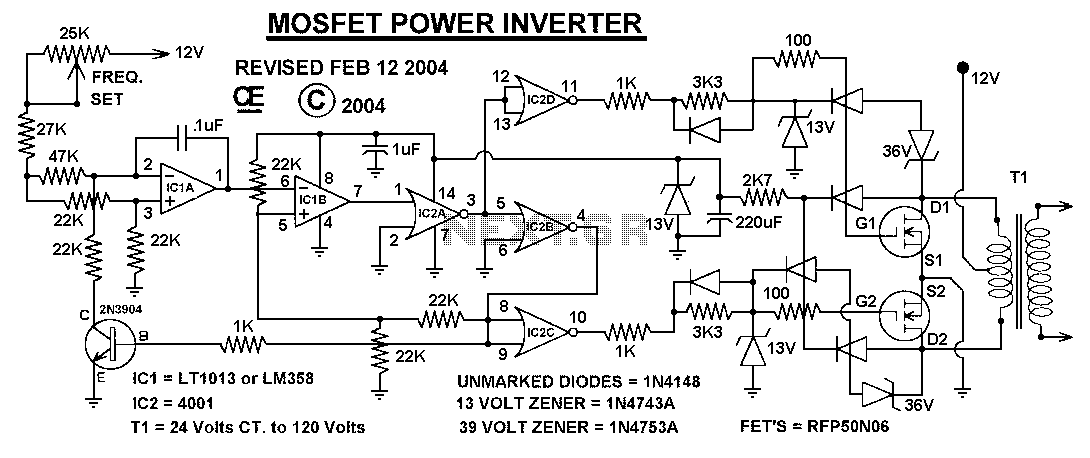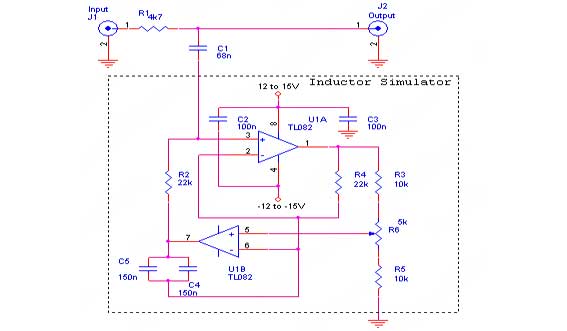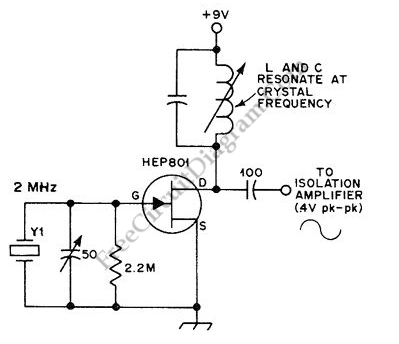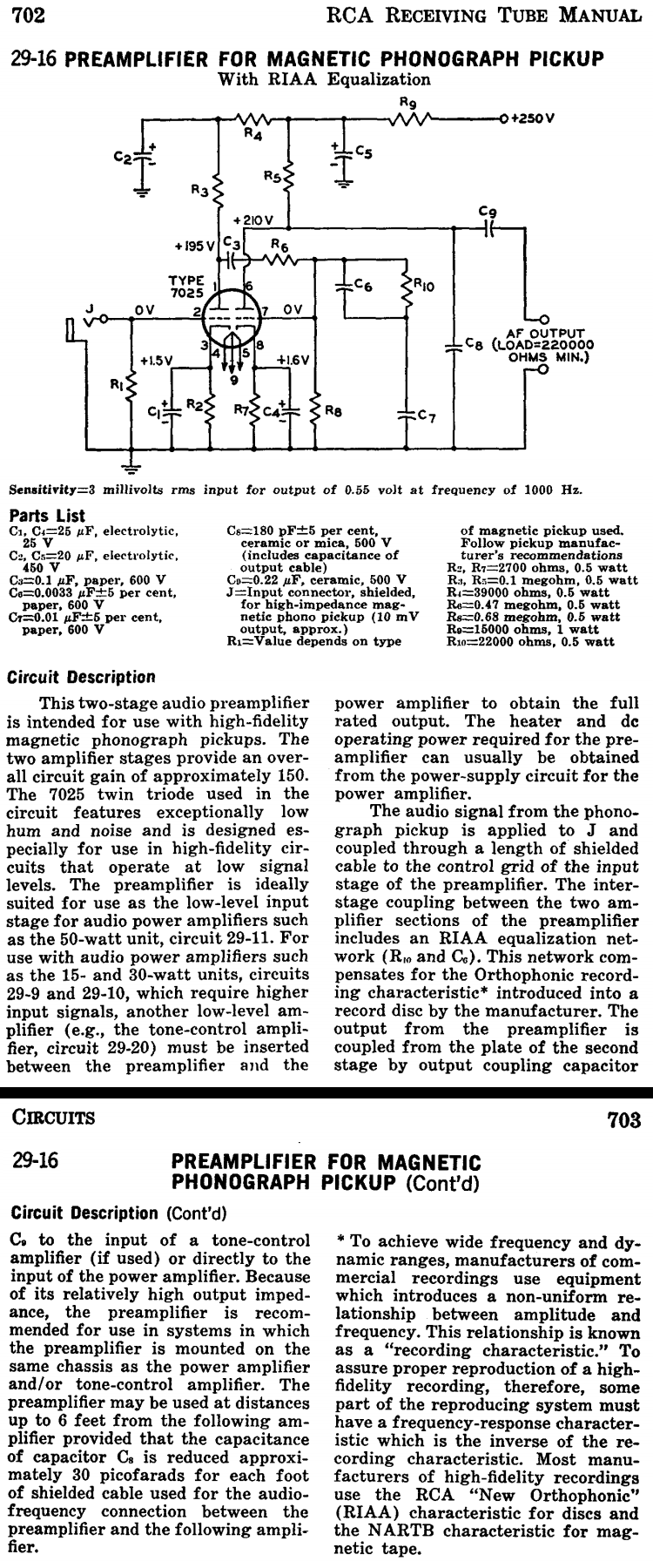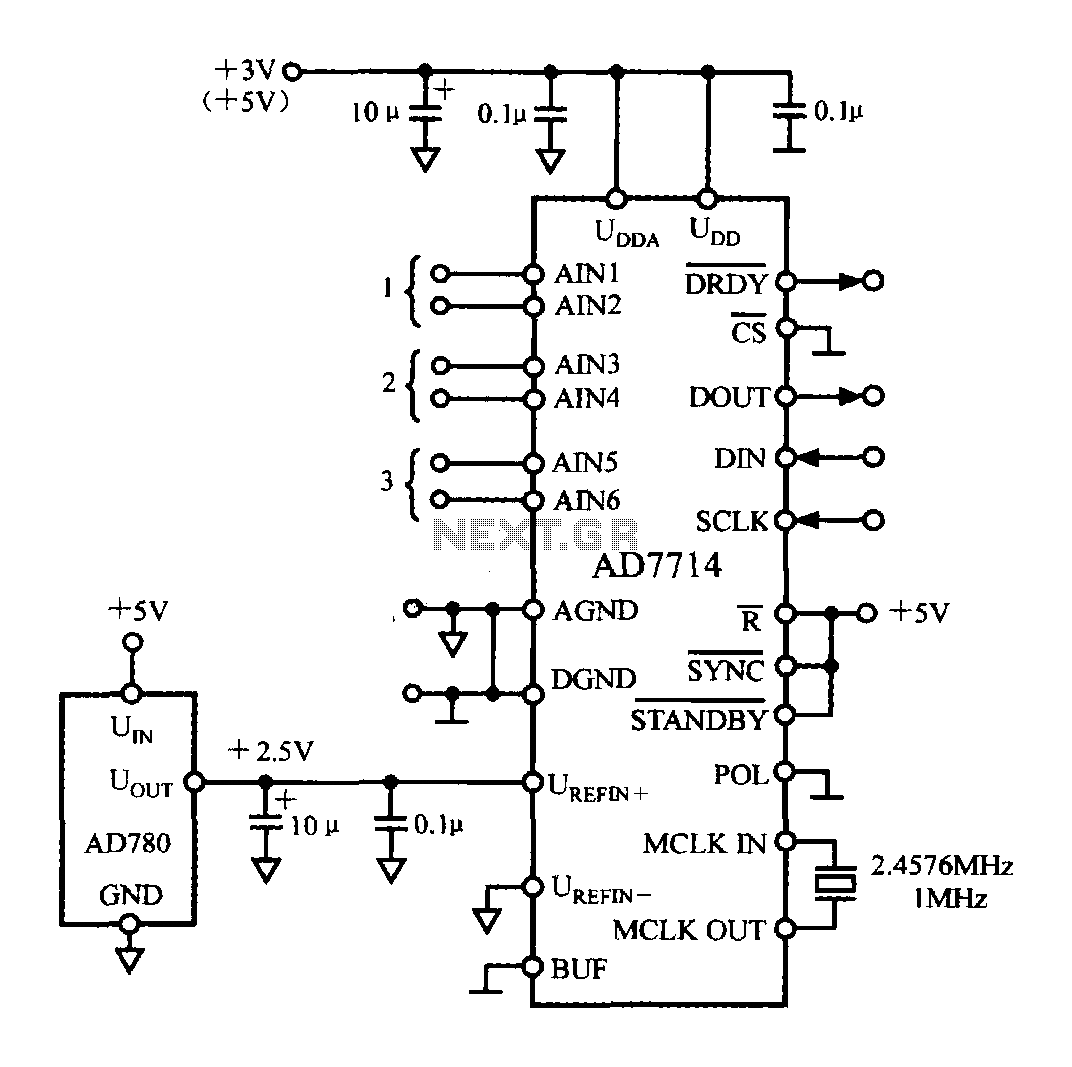
Very low frequency active filter 5G28 schematic
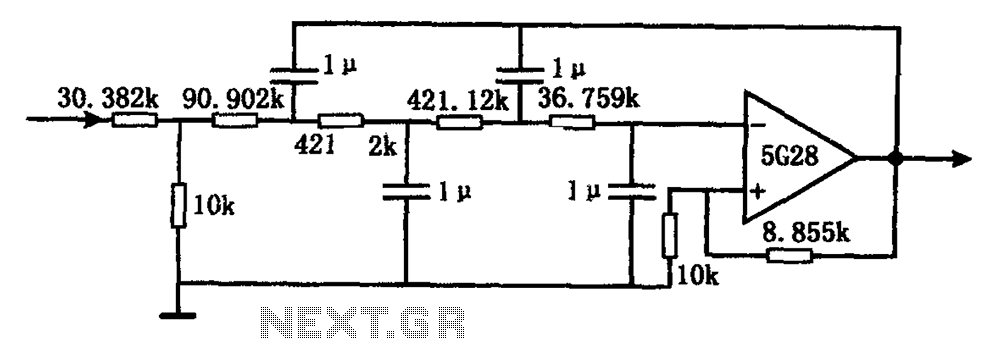
The circuit illustrated in the figure represents a staggered low-frequency active filter. This is a fourth-order Butterworth low-pass active filter designed to filter very low frequency (VLF) random pulse noise voltage at the DC level. The cut-off frequency is approximately 8 Hz, with a gain reduction of 20 dB at 18 Hz. The intrinsic attenuation in the passband is 0.467, and the input resistance is around 40 kΩ. The filter network employs several metal film precision resistors in series. A 1 µF capacitor is used to achieve significant accuracy, ensuring that the cut-off frequency (fc) is close to the theoretical value.
The fourth-order Butterworth low-pass filter is characterized by its maximally flat frequency response in the passband, making it suitable for applications where preserving the amplitude characteristics of the input signal is crucial. The design utilizes a combination of operational amplifiers and passive components, specifically resistors and capacitors, to achieve the desired filtering effect.
In this configuration, the filter's cut-off frequency is determined by the values of the resistors and the capacitor used in the circuit. The choice of a 1 µF capacitor is particularly important as it allows for a precise tuning of the cut-off frequency, ensuring that the filter effectively attenuates frequencies above 8 Hz while maintaining the integrity of the signals within the passband. The use of metal film precision resistors contributes to the overall stability and reliability of the filter, providing minimal thermal drift and low noise characteristics.
The intrinsic attenuation of 0.467 in the passband indicates that the filter will allow signals to pass with minimal loss, which is essential in applications requiring high fidelity. The input resistance of approximately 40 kΩ ensures that the filter can be interfaced with various signal sources without significantly affecting their output impedance.
Overall, this fourth-order Butterworth low-pass active filter is well-suited for applications involving the suppression of unwanted VLF noise while preserving the desired signal quality, making it an effective solution in various electronic systems. As shown in FIG staggering low frequency active filter circuit. This is a fourth-order Butterworth low-pass active filters for filtered VLF random pulse noise voltage DC level signal on its cut-off frequency (-3dB) about 8Hz, at 18Hz at 20dB gain reduction. Intrinsic attenuation in the passband of 0.467. Input resistance is approximately 40k. Filter network using a number of resistors are metal film precision resistor in series. If one 1 F capacitor to achieve a considerable accuracy, the cutoff frequency fc close to the theoretical value.
The fourth-order Butterworth low-pass filter is characterized by its maximally flat frequency response in the passband, making it suitable for applications where preserving the amplitude characteristics of the input signal is crucial. The design utilizes a combination of operational amplifiers and passive components, specifically resistors and capacitors, to achieve the desired filtering effect.
In this configuration, the filter's cut-off frequency is determined by the values of the resistors and the capacitor used in the circuit. The choice of a 1 µF capacitor is particularly important as it allows for a precise tuning of the cut-off frequency, ensuring that the filter effectively attenuates frequencies above 8 Hz while maintaining the integrity of the signals within the passband. The use of metal film precision resistors contributes to the overall stability and reliability of the filter, providing minimal thermal drift and low noise characteristics.
The intrinsic attenuation of 0.467 in the passband indicates that the filter will allow signals to pass with minimal loss, which is essential in applications requiring high fidelity. The input resistance of approximately 40 kΩ ensures that the filter can be interfaced with various signal sources without significantly affecting their output impedance.
Overall, this fourth-order Butterworth low-pass active filter is well-suited for applications involving the suppression of unwanted VLF noise while preserving the desired signal quality, making it an effective solution in various electronic systems. As shown in FIG staggering low frequency active filter circuit. This is a fourth-order Butterworth low-pass active filters for filtered VLF random pulse noise voltage DC level signal on its cut-off frequency (-3dB) about 8Hz, at 18Hz at 20dB gain reduction. Intrinsic attenuation in the passband of 0.467. Input resistance is approximately 40k. Filter network using a number of resistors are metal film precision resistor in series. If one 1 F capacitor to achieve a considerable accuracy, the cutoff frequency fc close to the theoretical value.
